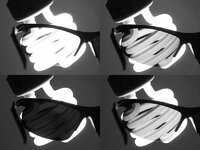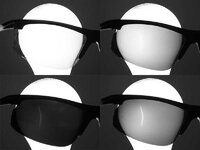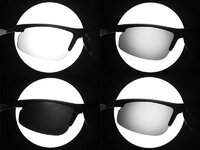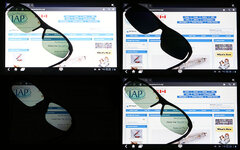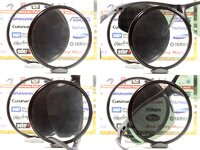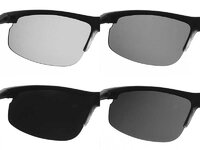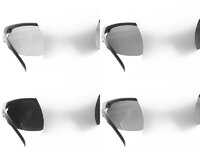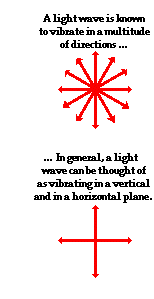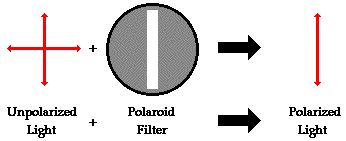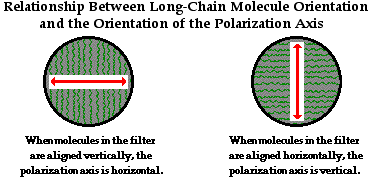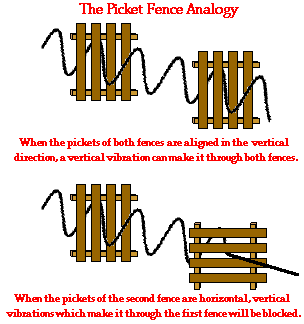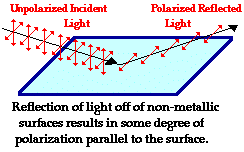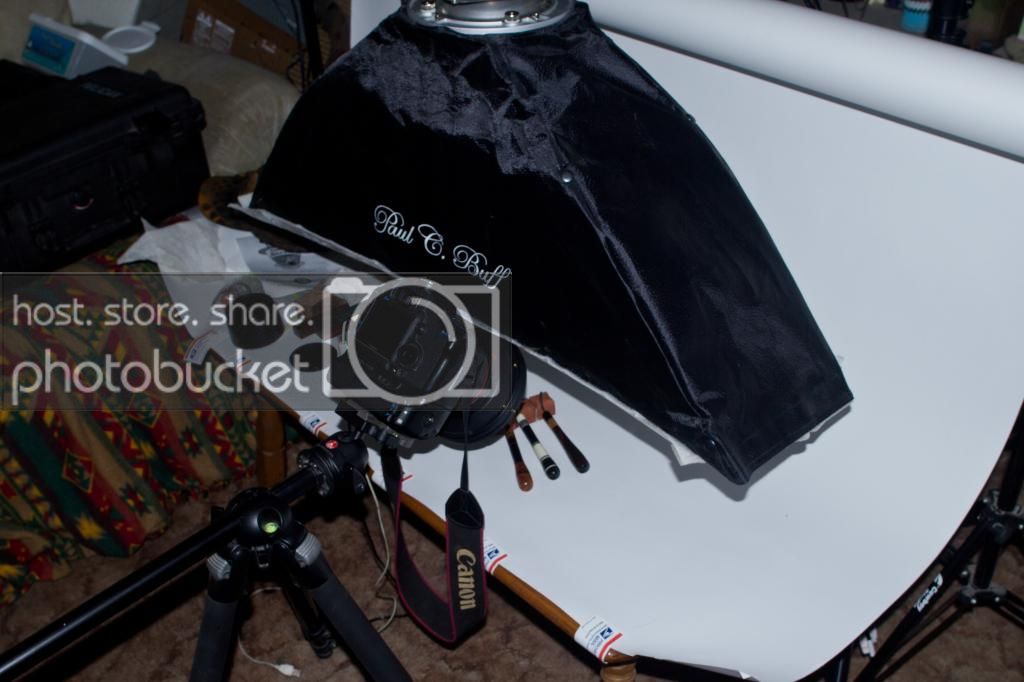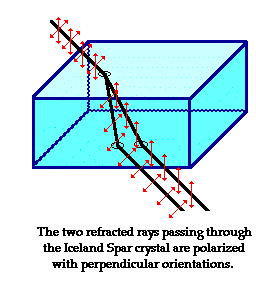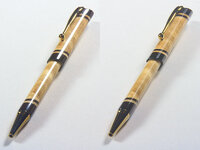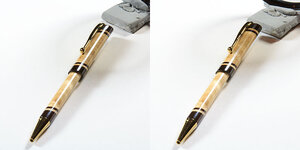Sylvanite
Member
The topic of glare, and how light polarization affects it seems to crop up over and over - along with some common misconceptions. I'd like to address a few of them here.
First off, just what is "glare"? Glare is a strong direct reflection that distracts from, obscures or washes out details in your subject. Some direct reflection is not necessarily a bad thing. It provides a visual cue to surface shape (what is known as a specular highlight). Without a little glare, it's difficult to see the quality of a gloss finish. Just how much is too much varies with the viewer. Each of us has our own preference. I've had photos where one person commented that he wanted to see more shine - but another complained about the glare. So, don't worry about the naysayers.
Ok, I've used a term without defining it first, so let's back up and talk about different ways that an object can reflect light:
Now, what is polarized light? This is not easy to imagine, because the common analogies don't always work. Nevertheless, if you think of light as waves, then the wave frequency determines color, the amplitude determines brightness, and the angle of the wave is its polarization. "Polarized Light" consists of waves all aligned at the same angle. Unpolarized light has equal amounts of waves at all different angles. Partially polarized light is a mix of the two.
When unpolarized light meets a polarizing filter (or polarizing reflector), then the waves that align with the filter pass through. The waves that are perpendicular get absorbed. The waves that are at an angle to the filter are partially absorbed and partially transmitted - with the transmitted portion all aligned. The result is that 50% of the light is blocked, and the remaining 50% is polarized.
When polarized light meets a polarizing filter, the effect depends on the relative angles of polarization. If they are the same, then the light passes through unchanged (and undimmed). If they are perpendicular, then the light is completely absorbed. At other angles, the light is partially transmitted and repolarized in the direction of the filter.
This can be confusing, but it is necessary to understand when using polarizing filters in photography.
Almost all light sources produce unpolarized light. That includes candles, the sun, and artificial lights (incandescent, fluorescent, and LED).
Although it's theoretically possible to make a polarizing diffuser, most diffusers do not polarize light. Diffusers made for photography - including light tents - do not. In fact, diffusers generally depolarize light (they scatter light, producing waves with differing orientations). Think about it - a polarizing filter absorbs 50% of unpolarized light. You wouldn't want a photo diffuser that cuts your light in half.
A cloudy sky works similarly. The water droplets scatter light randomly, yielding unpolarized light. A blue sky, on the other hand, produces polarized light. The blue color comes from the ozone layer which not only filters out the other colors, but also (because ozone molecules are electrically polarized) aligns the waves.
Reflection also affects polarization. Even if the source light is unpolarized, the reflection may be. Conversely, a polarized light can produce unpolarized reflections. Remember the 2 types of reflections, diffuse and direct? Well, diffuse reflections do not polarize light. In fact, they typically depolarize it. Direct reflections may or may not become polarized. Conductive surfaces (such as metal) typically reflect whatever light hits them neither polarizing nor depolarizing it. Non-conductive surfaces (including water, gloss plastic and polished wood) typically produce a polarized direct reflection.
Whew! That's a lot to get through. What's important to realize though is that glare can be be either polarized or unpolarized. If your light source is unpolarized, then glare off metal pen components will be unpolarized. Glare off a wood or plastic pen barrel, however, might be.
If the glare is polarized, then a polarizing filter can reduce or remove it. If the glare is unpolarized, however, then a polarizing filter will not. If the glare is mixed, then a polarizing filter could reduce it on one part but not another.
So, although a single polarizing filter on your camera lens might help control some glare, it is not a complete solution.
There is a technique called cross-polarization that some people use. In this setup, you place a polarizing filter over your light source. The diffuse reflections off your subject are depolarized. The direct reflections off your subject are polarized - even if they are metal. Now, a polarizing lens filter will remove the direct reflection (glare). Cross-polarization can work quite well, but it does have its own limitations. First off, it typically limits you to one light source (matching polarization can be difficult). Secondly, the polarizing filter halves your light, so to achieve the same exposure, you'll need a brighter (more expensive) light. The filter itself is an additional investment as well. Finally, some subjects will repolarize the direct reflection in multiple orientations, so there are still situations that cross-polarization will not handle.
Fortunately, there are tools to manage glare besides polarization. Since glare is really a matter of direct reflection - not polarization - then glare (polarized or unpolarized) can be controlled by manipulating the direct reflection. The angle (or "family of angles") of illumination that produces direct reflection is generally small compared to the angles that produce diffuse reflection. Therefore, you can control the glare by adjusting the relative brightness of the light(s) within that family of angles. If you want to reduce glare, you can selectively lower the proportion of light coming from the direction that produces direct reflection. Product photographers often use multiple lights and/or reflectors outside the family of angles of direct reflection, or place a "go-between" (a.k.a. "gobo") in front of a light blocking the family of angles that reduce glare.
That isn't as complicated as it may sound. Check out http://www.penturners.org/forum/f24/pen-photography-putting-concept-into-practice-128555/ for and example of using a light tent and a go-between to achieve a picture with even illumination and a subtle shine-line.
I hope that helps,
Eric
First off, just what is "glare"? Glare is a strong direct reflection that distracts from, obscures or washes out details in your subject. Some direct reflection is not necessarily a bad thing. It provides a visual cue to surface shape (what is known as a specular highlight). Without a little glare, it's difficult to see the quality of a gloss finish. Just how much is too much varies with the viewer. Each of us has our own preference. I've had photos where one person commented that he wanted to see more shine - but another complained about the glare. So, don't worry about the naysayers.
Ok, I've used a term without defining it first, so let's back up and talk about different ways that an object can reflect light:
- Direct Reflection occurs when light hitting it bounces off solely at the complementary angle (angle of incidence = angle of reflection). This is typical of smooth surfaces.
- Diffuse Reflection occurs when light is scattered. When light hits a matte surface, it is reflected in a variety of angles.
Now, what is polarized light? This is not easy to imagine, because the common analogies don't always work. Nevertheless, if you think of light as waves, then the wave frequency determines color, the amplitude determines brightness, and the angle of the wave is its polarization. "Polarized Light" consists of waves all aligned at the same angle. Unpolarized light has equal amounts of waves at all different angles. Partially polarized light is a mix of the two.
When unpolarized light meets a polarizing filter (or polarizing reflector), then the waves that align with the filter pass through. The waves that are perpendicular get absorbed. The waves that are at an angle to the filter are partially absorbed and partially transmitted - with the transmitted portion all aligned. The result is that 50% of the light is blocked, and the remaining 50% is polarized.
When polarized light meets a polarizing filter, the effect depends on the relative angles of polarization. If they are the same, then the light passes through unchanged (and undimmed). If they are perpendicular, then the light is completely absorbed. At other angles, the light is partially transmitted and repolarized in the direction of the filter.
This can be confusing, but it is necessary to understand when using polarizing filters in photography.
Almost all light sources produce unpolarized light. That includes candles, the sun, and artificial lights (incandescent, fluorescent, and LED).
Although it's theoretically possible to make a polarizing diffuser, most diffusers do not polarize light. Diffusers made for photography - including light tents - do not. In fact, diffusers generally depolarize light (they scatter light, producing waves with differing orientations). Think about it - a polarizing filter absorbs 50% of unpolarized light. You wouldn't want a photo diffuser that cuts your light in half.
A cloudy sky works similarly. The water droplets scatter light randomly, yielding unpolarized light. A blue sky, on the other hand, produces polarized light. The blue color comes from the ozone layer which not only filters out the other colors, but also (because ozone molecules are electrically polarized) aligns the waves.
Reflection also affects polarization. Even if the source light is unpolarized, the reflection may be. Conversely, a polarized light can produce unpolarized reflections. Remember the 2 types of reflections, diffuse and direct? Well, diffuse reflections do not polarize light. In fact, they typically depolarize it. Direct reflections may or may not become polarized. Conductive surfaces (such as metal) typically reflect whatever light hits them neither polarizing nor depolarizing it. Non-conductive surfaces (including water, gloss plastic and polished wood) typically produce a polarized direct reflection.
Whew! That's a lot to get through. What's important to realize though is that glare can be be either polarized or unpolarized. If your light source is unpolarized, then glare off metal pen components will be unpolarized. Glare off a wood or plastic pen barrel, however, might be.
If the glare is polarized, then a polarizing filter can reduce or remove it. If the glare is unpolarized, however, then a polarizing filter will not. If the glare is mixed, then a polarizing filter could reduce it on one part but not another.
So, although a single polarizing filter on your camera lens might help control some glare, it is not a complete solution.
There is a technique called cross-polarization that some people use. In this setup, you place a polarizing filter over your light source. The diffuse reflections off your subject are depolarized. The direct reflections off your subject are polarized - even if they are metal. Now, a polarizing lens filter will remove the direct reflection (glare). Cross-polarization can work quite well, but it does have its own limitations. First off, it typically limits you to one light source (matching polarization can be difficult). Secondly, the polarizing filter halves your light, so to achieve the same exposure, you'll need a brighter (more expensive) light. The filter itself is an additional investment as well. Finally, some subjects will repolarize the direct reflection in multiple orientations, so there are still situations that cross-polarization will not handle.
Fortunately, there are tools to manage glare besides polarization. Since glare is really a matter of direct reflection - not polarization - then glare (polarized or unpolarized) can be controlled by manipulating the direct reflection. The angle (or "family of angles") of illumination that produces direct reflection is generally small compared to the angles that produce diffuse reflection. Therefore, you can control the glare by adjusting the relative brightness of the light(s) within that family of angles. If you want to reduce glare, you can selectively lower the proportion of light coming from the direction that produces direct reflection. Product photographers often use multiple lights and/or reflectors outside the family of angles of direct reflection, or place a "go-between" (a.k.a. "gobo") in front of a light blocking the family of angles that reduce glare.
That isn't as complicated as it may sound. Check out http://www.penturners.org/forum/f24/pen-photography-putting-concept-into-practice-128555/ for and example of using a light tent and a go-between to achieve a picture with even illumination and a subtle shine-line.
I hope that helps,
Eric

